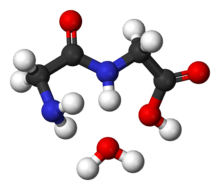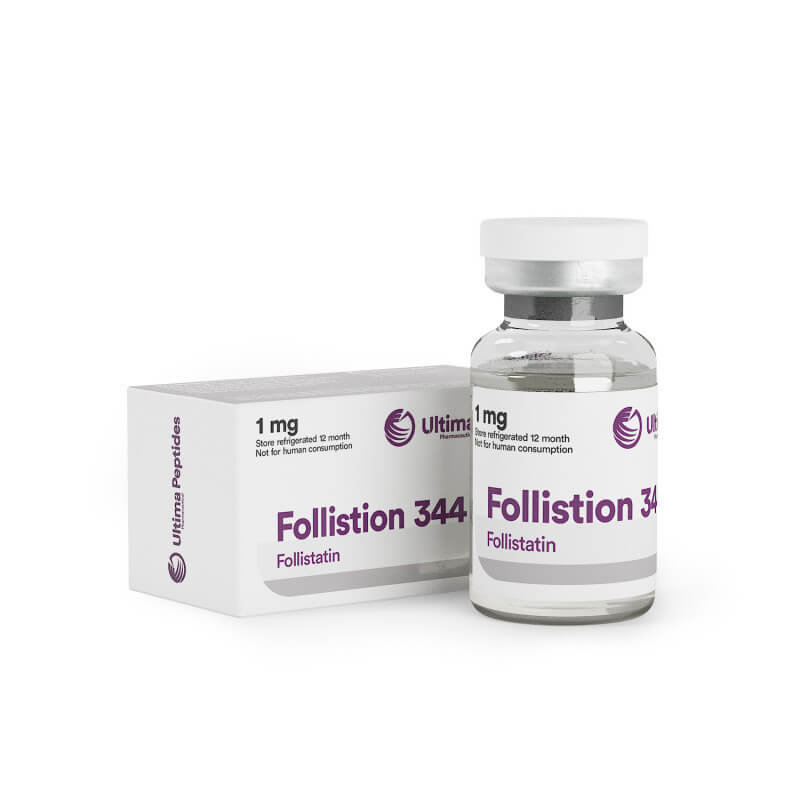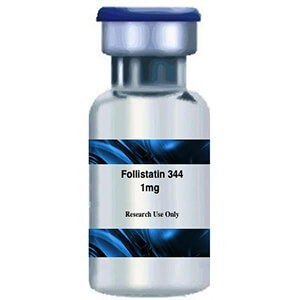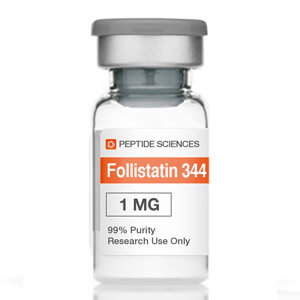
Follistatin
 Follistatin (ordinarily labelled as follistatin 344) is a fairly recent addition to the peptide family (early 2000’s) and has created an enormous buzz throughout the anabolic community since its inception.
Follistatin (ordinarily labelled as follistatin 344) is a fairly recent addition to the peptide family (early 2000’s) and has created an enormous buzz throughout the anabolic community since its inception.
Rigorous field tests have yielded nigh on unbelievable results to date, and many believe that this substance represents a major forward step in the development of anabolic agents.
What’s the truth of the situation though? – Is this really the future of physical advancement or are we overlooking some very important points in the midst of all the hype?
This profile will fully explain what this compound is, how it works, how it doesn’t work and will ultimately provide you with a fair and rationally formed overview of follistatin.
By the end, you may consider it to be a worthy addition to your existing peptide / anabolic arsenal, or you may simply believe that it is nothing but “hot air”.
What Is Follistatin?
Being that follistatin 344 belongs to the peptide family; you may have guessed already that it is in fact a peptide.
In order to explain what follistatin is, we must first provide an analysis of what a peptide is and how it functions as this will go some way to explaining how follistatin exerts its reported benefits on the human body.
What Are Peptides?
 Peptides are classed as being a “simplified” version of a protein; whereas the “protein” classification requires a molecule to contain at least 50 amino acids, a peptide classification requires it to have less than 50.
Peptides are classed as being a “simplified” version of a protein; whereas the “protein” classification requires a molecule to contain at least 50 amino acids, a peptide classification requires it to have less than 50.
Amino acid properties vary significantly; they are used for everything from skin cell repair to organ / immune vitality and even for neurotransmission.
As such, peptides can vary massively in terms of the benefits they exert within the body – as can protein structures. It all depends on the combination of amino acids they happen to contain.
You’ll find peptides included in everything from cosmetic products to medicine – the universal trait they all share is that they can trigger a variety of physiological responses by serving as an “instigator” of action within the body.
What type of action they manifest is all down to the type of peptide you are using and their unique amino acid “coding”; the GHRP 6 growth hormone secretagogue peptide for instance has a unique 28 amino acid chain that leads to the release of growth hormone releasing hormone.
In regards to this product, follistatin features a distinct 29 amino acid signal sequence that leads to the subjugation of FSH (Follicle Stimulating Hormone) and Myostatin release.
The word statin is actually derived from the word “station” as in “stopping place” or “stationary” – as such the name follistatin suddenly makes a little more sense.
This product causes follicle stimulating hormone production to “stop” or become “stationary” in conjunction with it halting myostatin circulation.




